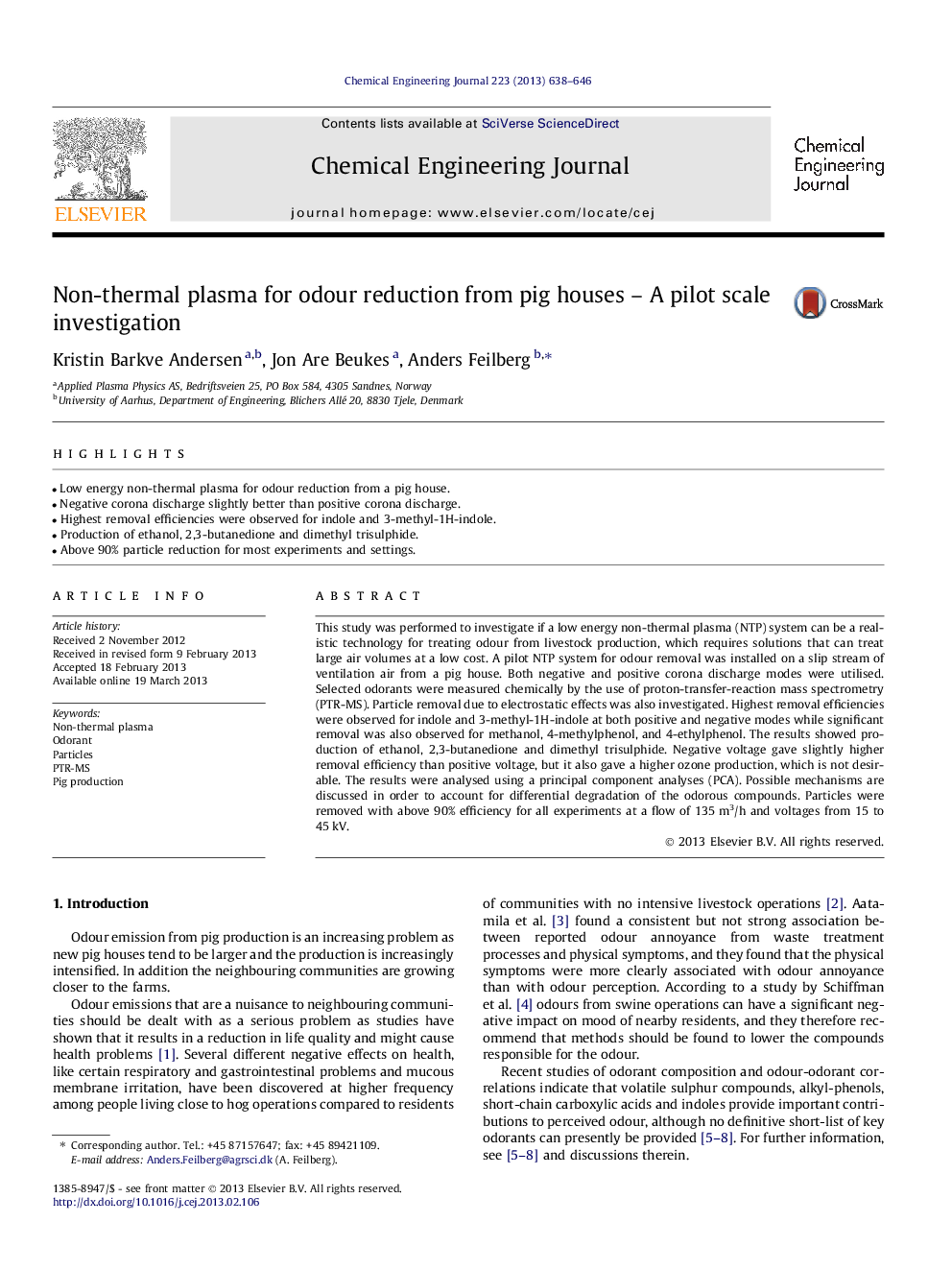| Article ID | Journal | Published Year | Pages | File Type |
|---|---|---|---|---|
| 6588044 | Chemical Engineering Journal | 2013 | 9 Pages |
Abstract
This study was performed to investigate if a low energy non-thermal plasma (NTP) system can be a realistic technology for treating odour from livestock production, which requires solutions that can treat large air volumes at a low cost. A pilot NTP system for odour removal was installed on a slip stream of ventilation air from a pig house. Both negative and positive corona discharge modes were utilised. Selected odorants were measured chemically by the use of proton-transfer-reaction mass spectrometry (PTR-MS). Particle removal due to electrostatic effects was also investigated. Highest removal efficiencies were observed for indole and 3-methyl-1H-indole at both positive and negative modes while significant removal was also observed for methanol, 4-methylphenol, and 4-ethylphenol. The results showed production of ethanol, 2,3-butanedione and dimethyl trisulphide. Negative voltage gave slightly higher removal efficiency than positive voltage, but it also gave a higher ozone production, which is not desirable. The results were analysed using a principal component analyses (PCA). Possible mechanisms are discussed in order to account for differential degradation of the odorous compounds. Particles were removed with above 90% efficiency for all experiments at a flow of 135Â m3/h and voltages from 15 to 45Â kV.
Related Topics
Physical Sciences and Engineering
Chemical Engineering
Chemical Engineering (General)
Authors
Kristin Barkve Andersen, Jon Are Beukes, Anders Feilberg,
